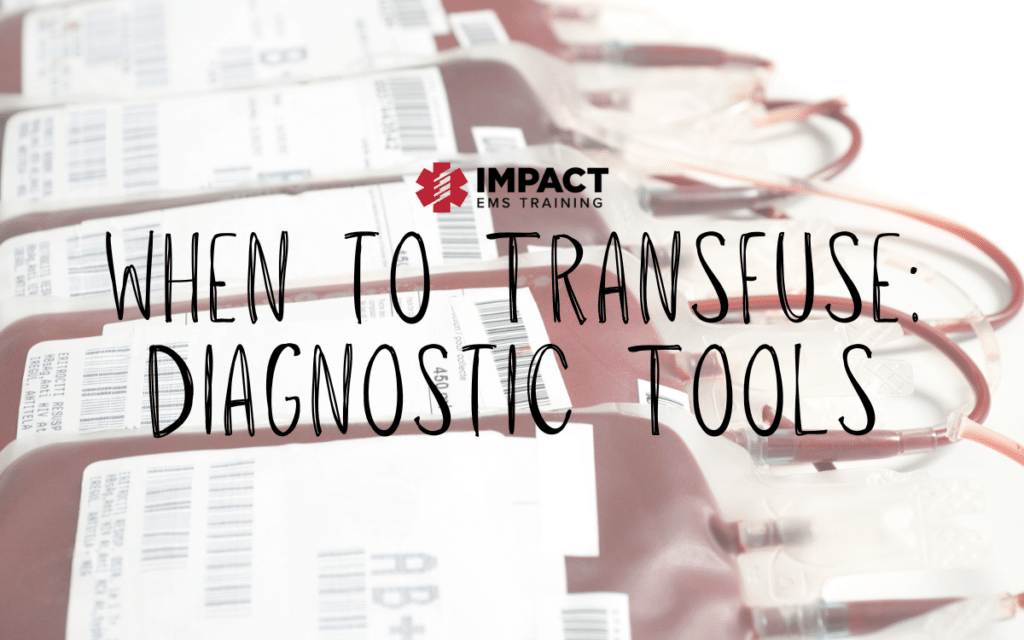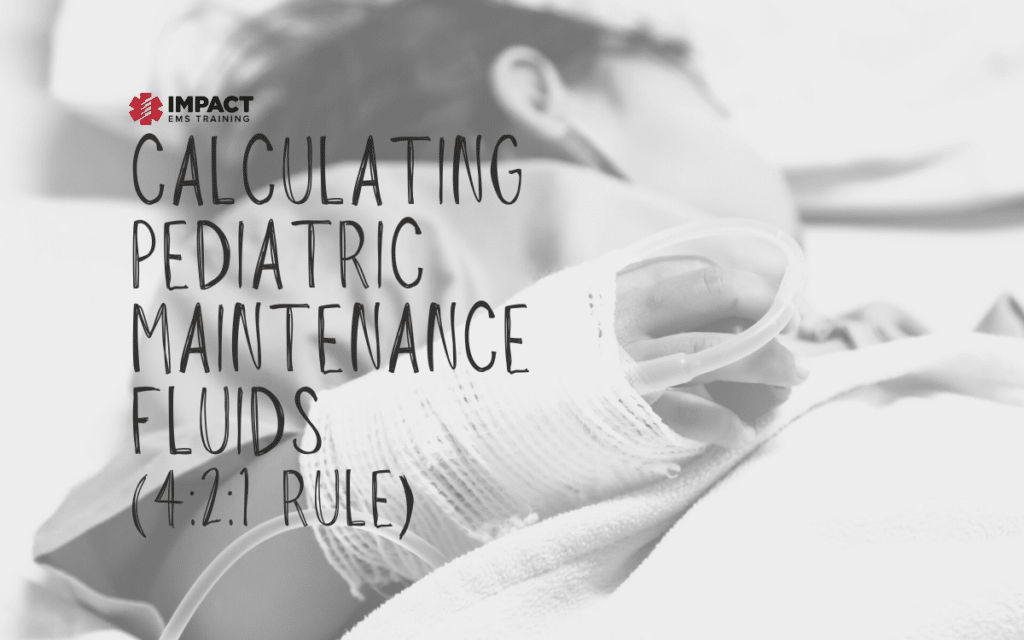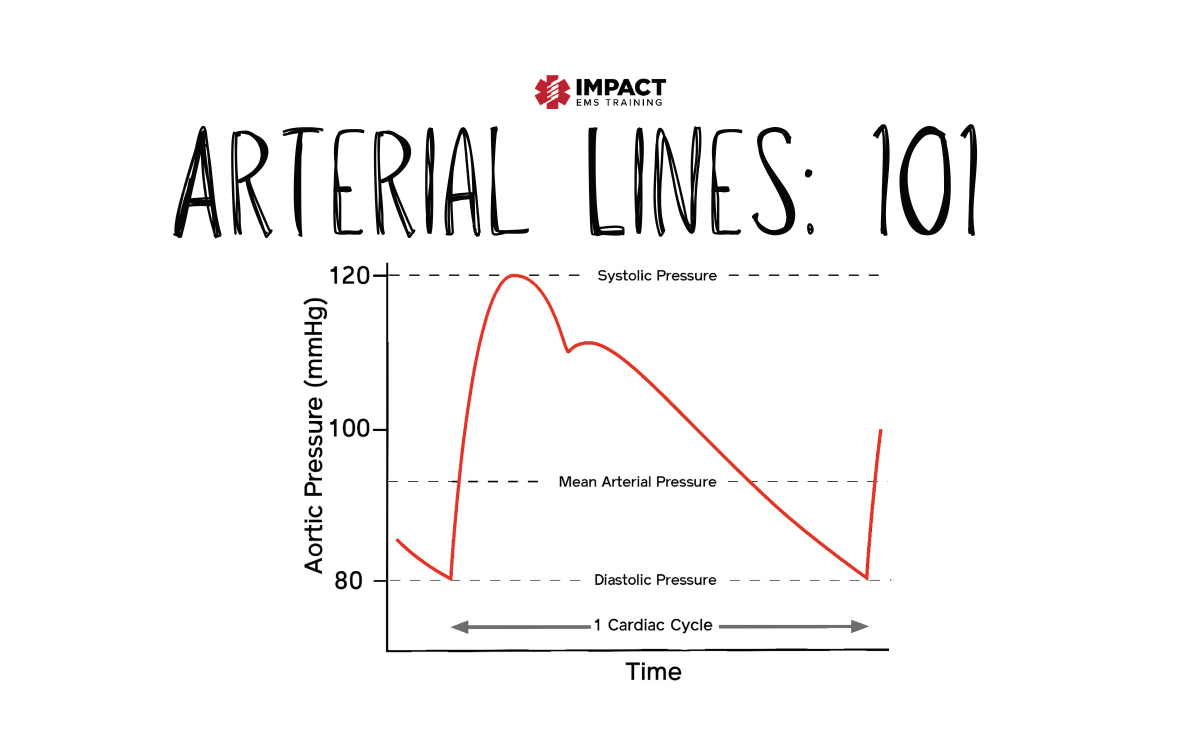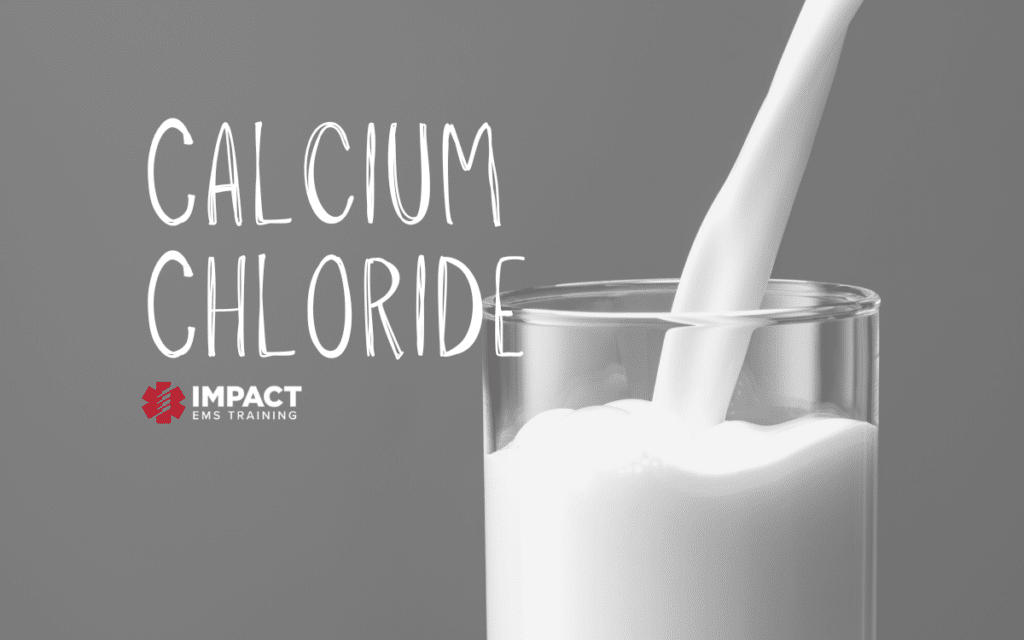When to Transfuse: Diagnostic Tools

When to Transfuse: Diagnostic Tools The ability to transfuse critically ill patients before they even reach the hospital doors is becoming a reality for more programs every day. Over the past several years the tides have shifted to favor blood in for blood out, highlighting the importance this component plays in our normal physiology. There […]
IV Flow Rate Restrictions with Commonly Used Equipment

The relationship between IV catheter gauge and flow rate seems to be widely understood, but there could be standard practices in your fluid administration that are making your sweet 16 gauge in the AC perform more like a 20 in the hand. The limitation isn’t with the catheter itself, but rather the different equipment […]
Calculating Pediatric Maintenance Fluids (4:2:1 Rule)

Pediatrics, calculations, fluids, maintenance, hypotonic, isotonic?!?! These words bring on a new type of stress. This stress usually appears while you are handing over $300 and sitting down for your FP-C® Recertification Course | 100 Hour or CFRN board exam. Planning to take one of these certification tests? I can guarantee that you will have […]
How To Make Zombies: Part I

Advances in Cardiac Arrest Care The most critical call we have as EMS providers is the one with the worst outcomes. Cardiac arrest care has been much the same for quite a while, because it’s hard to measure what works in those cases, and care guidelines lag years behind new evidence. For instance, “Heads-up CPR” […]
Arterial Lines 101

Arterial lines, commonly referred to as “A-lines,” are a type of catheter that is inserted into a patient’s artery for more accurate and precise blood pressure monitoring. The arterial line is connected to a transducer that will transmit a pressure waveform and its corresponding values to a monitoring system. While these invasive lines may be […]
How To Make Zombies: Part II

The Fun Stuff In Part 1, we looked at what happens to the body during a zombie apocalypse. Whoops, sorry, cardiac arrest. Impedance Threshold Devices and Heads-Up CPR were mentioned as being very effective in CPR, and it’s time to get to the fun stuff. I’m going to try really hard to not bore you […]
The Right Ventricle: The Big Breakup

The Right Ventricle: The Big Breakup Let’s pick up where we left off: RV failure caused by increased pulmonary vascular resistance. A sign she’s about to leave you: Right sided heart strain. When your girlfriend has had enough and she’s about to Dear John you, it’s called a crappy day. When the RV has had enough pressure and is […]
Calcium Chloride

Talking about calcium really gives legitimacy to the “He needs some milk” video and memes to follow. Calcium is an essential component to our treatment plan of calcium channel blocker overdose, beta-blocker overdose, hyperkalemia, hypocalcemia, and hypermagnesemia. Fun fact! 1G of calcium chloride is approximately equivalent in calcium content to 1 cup of 2% milk. […]
